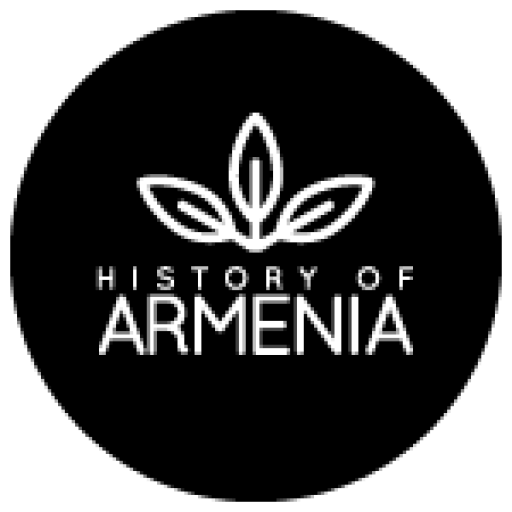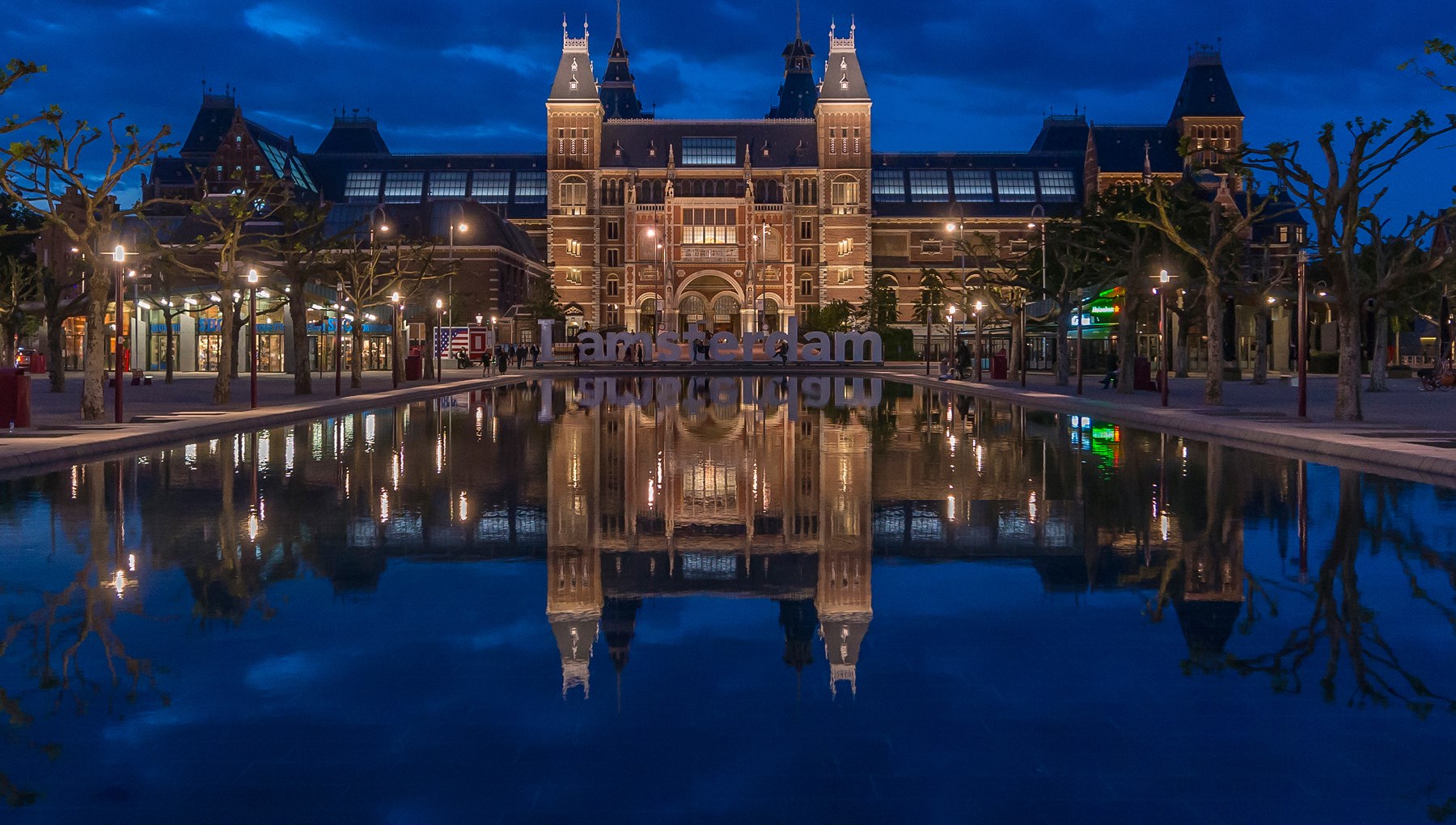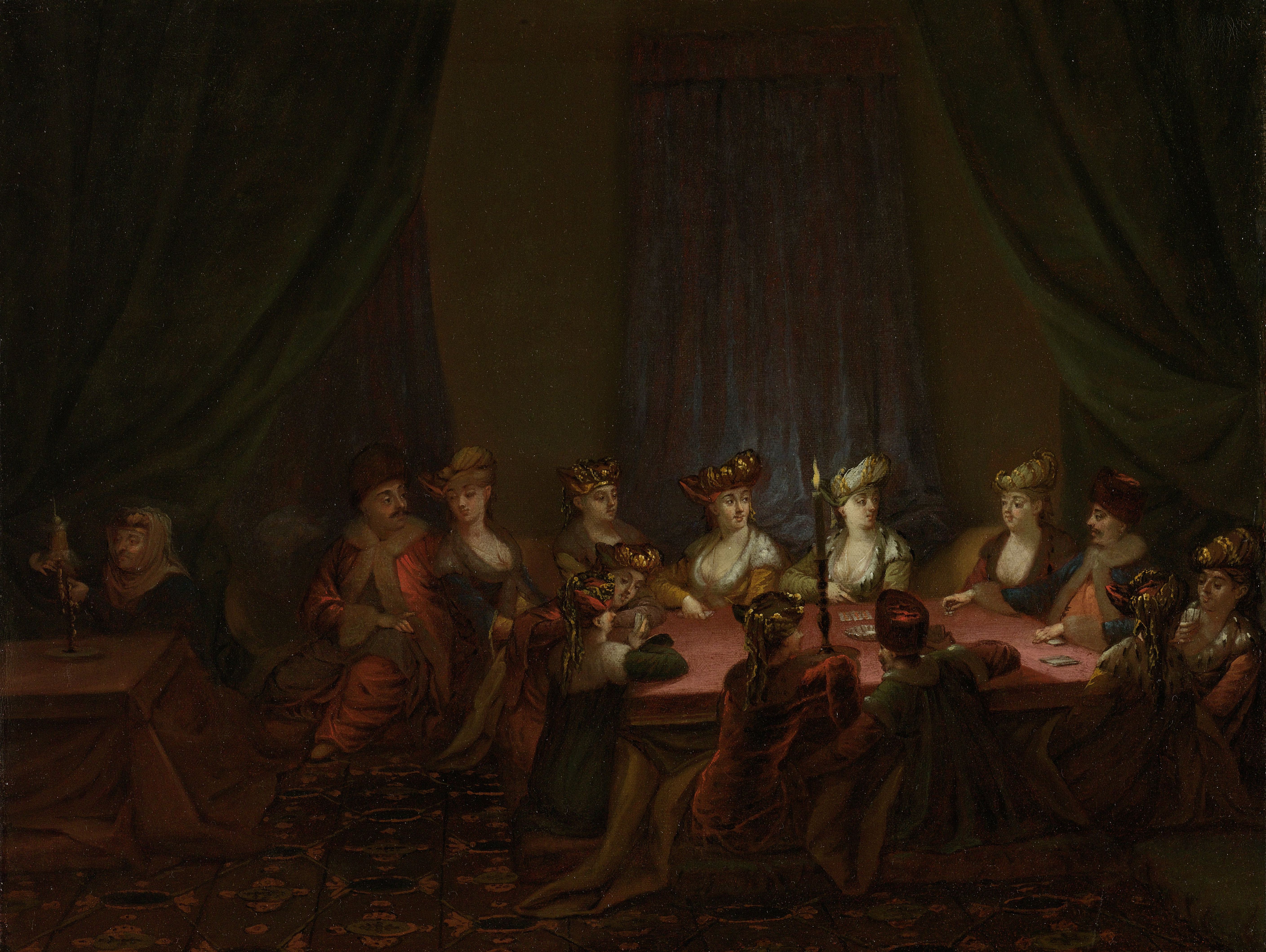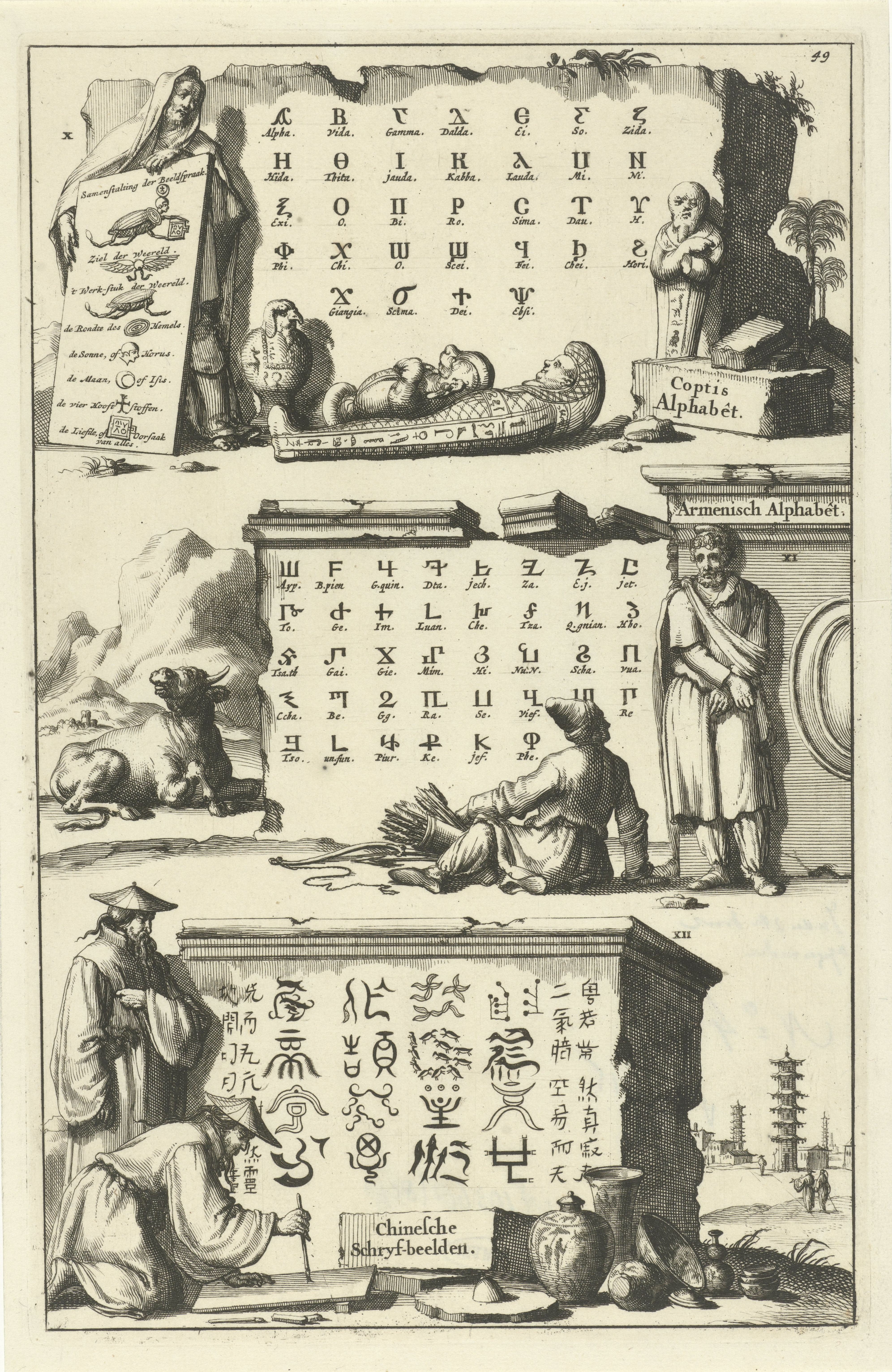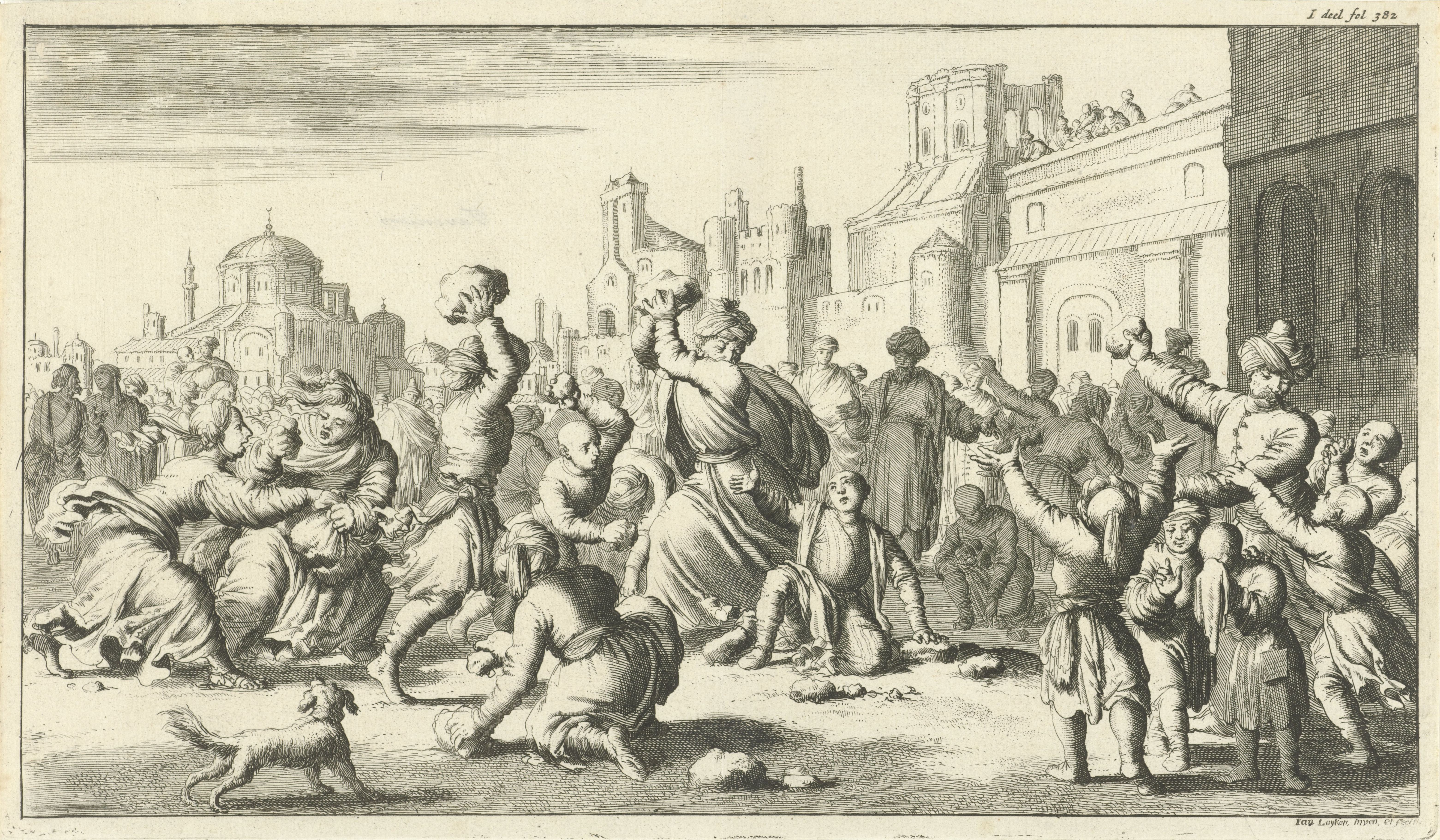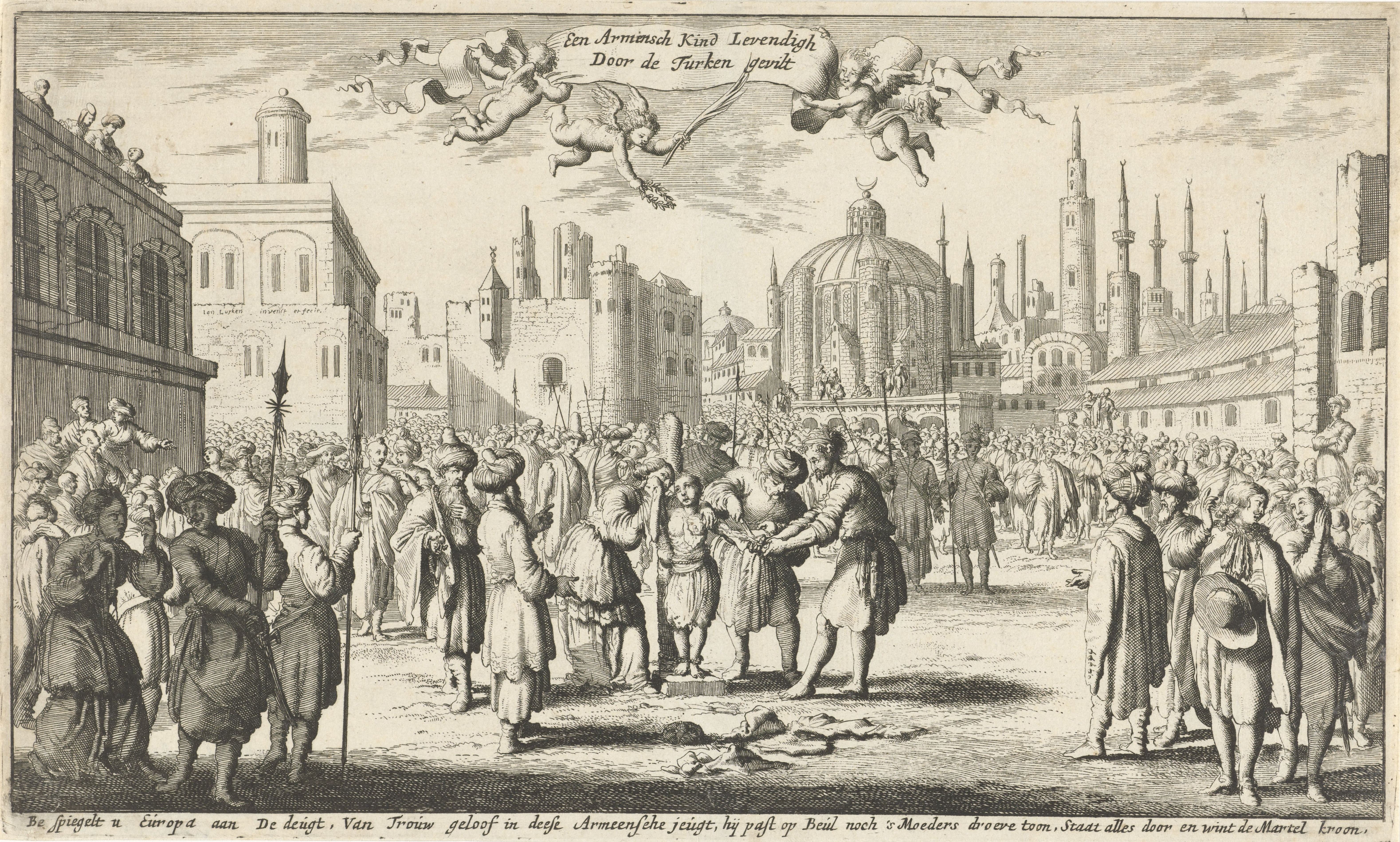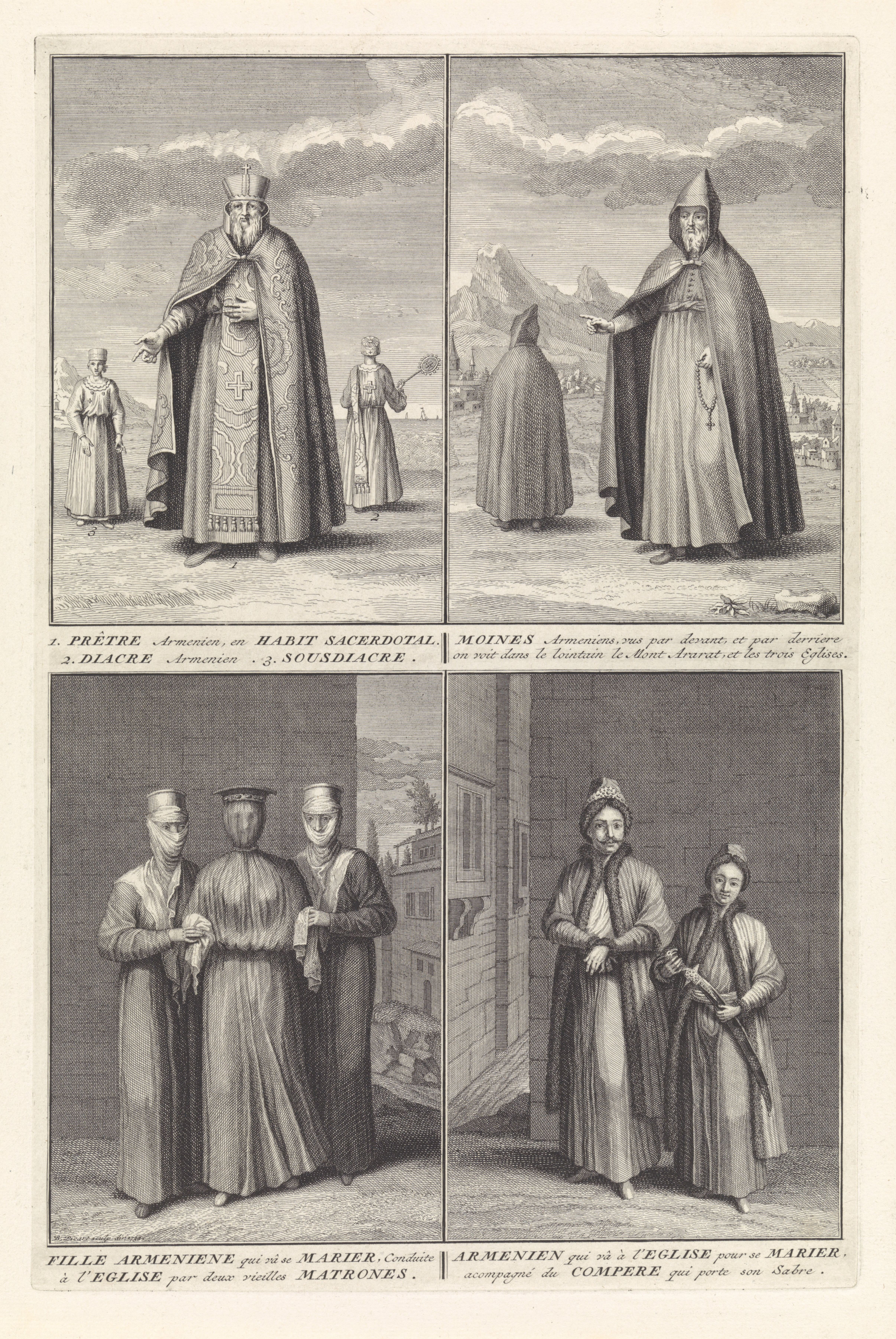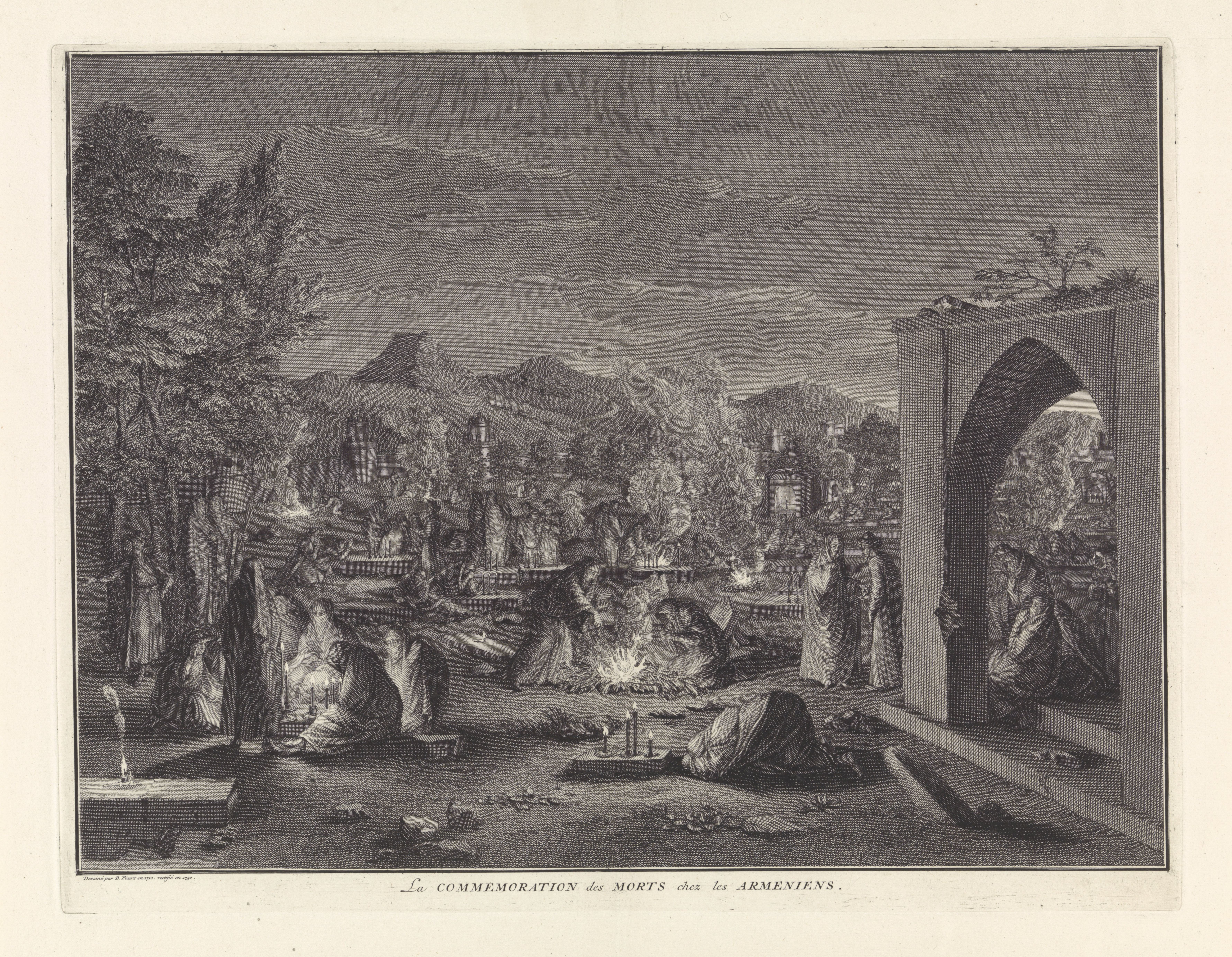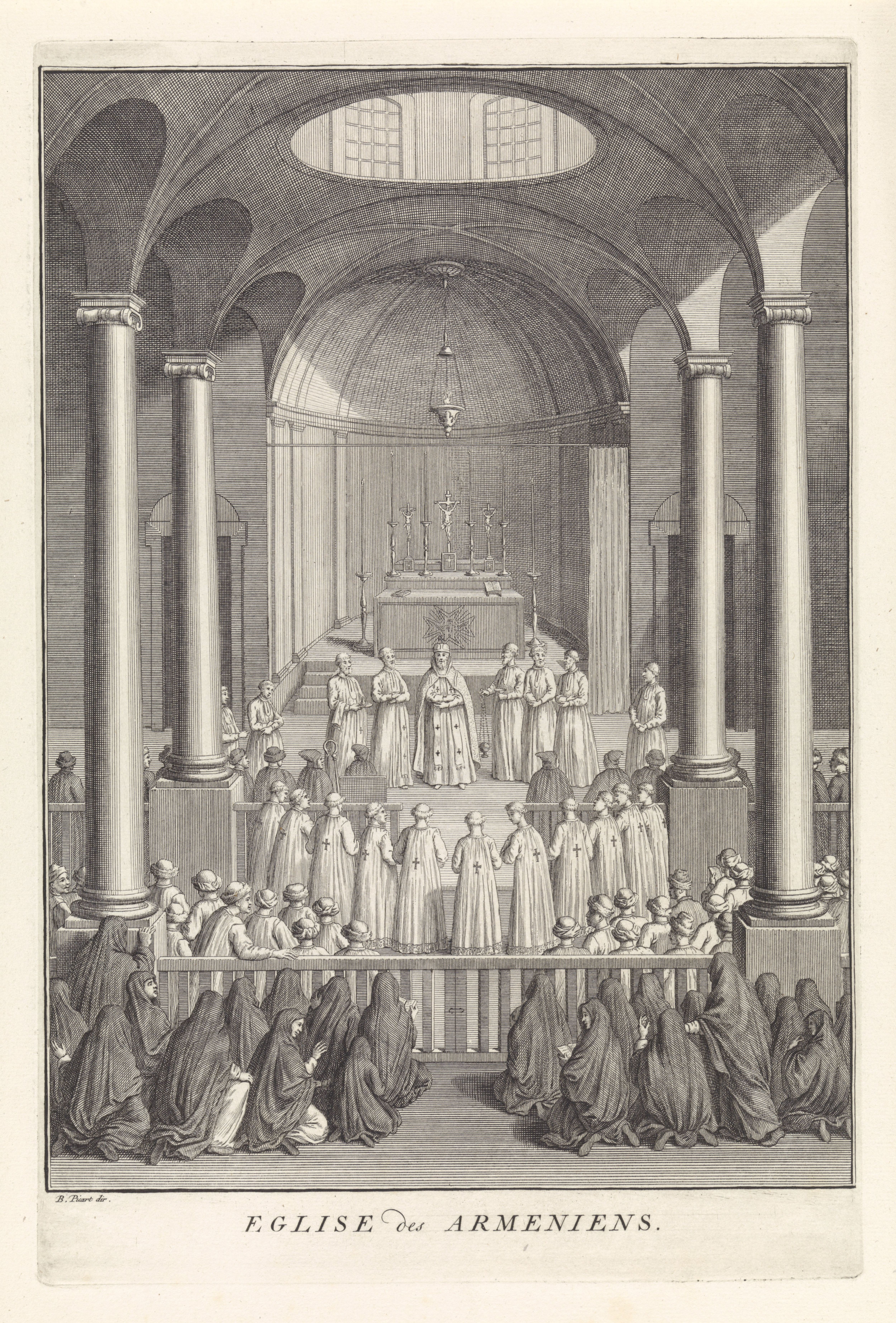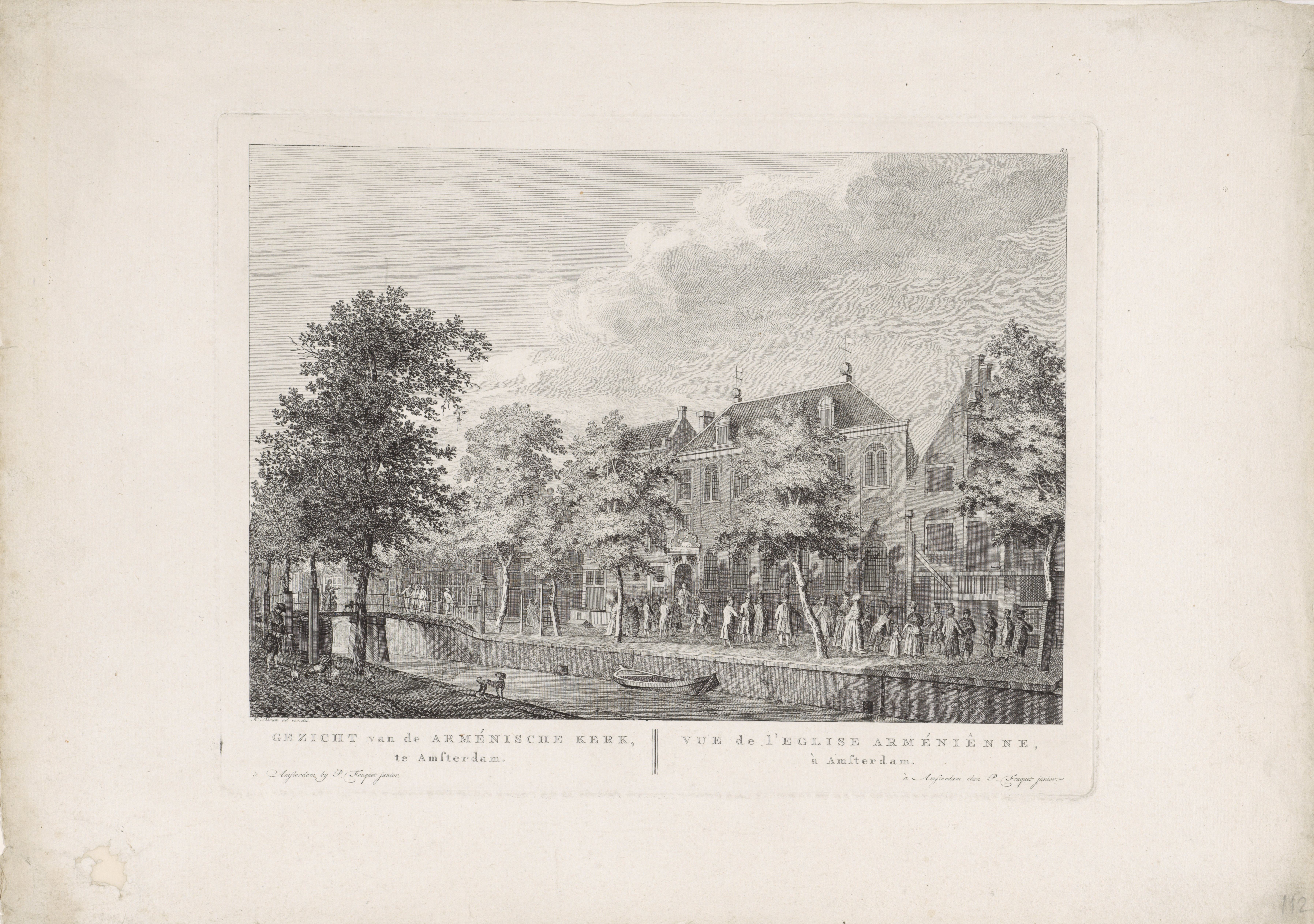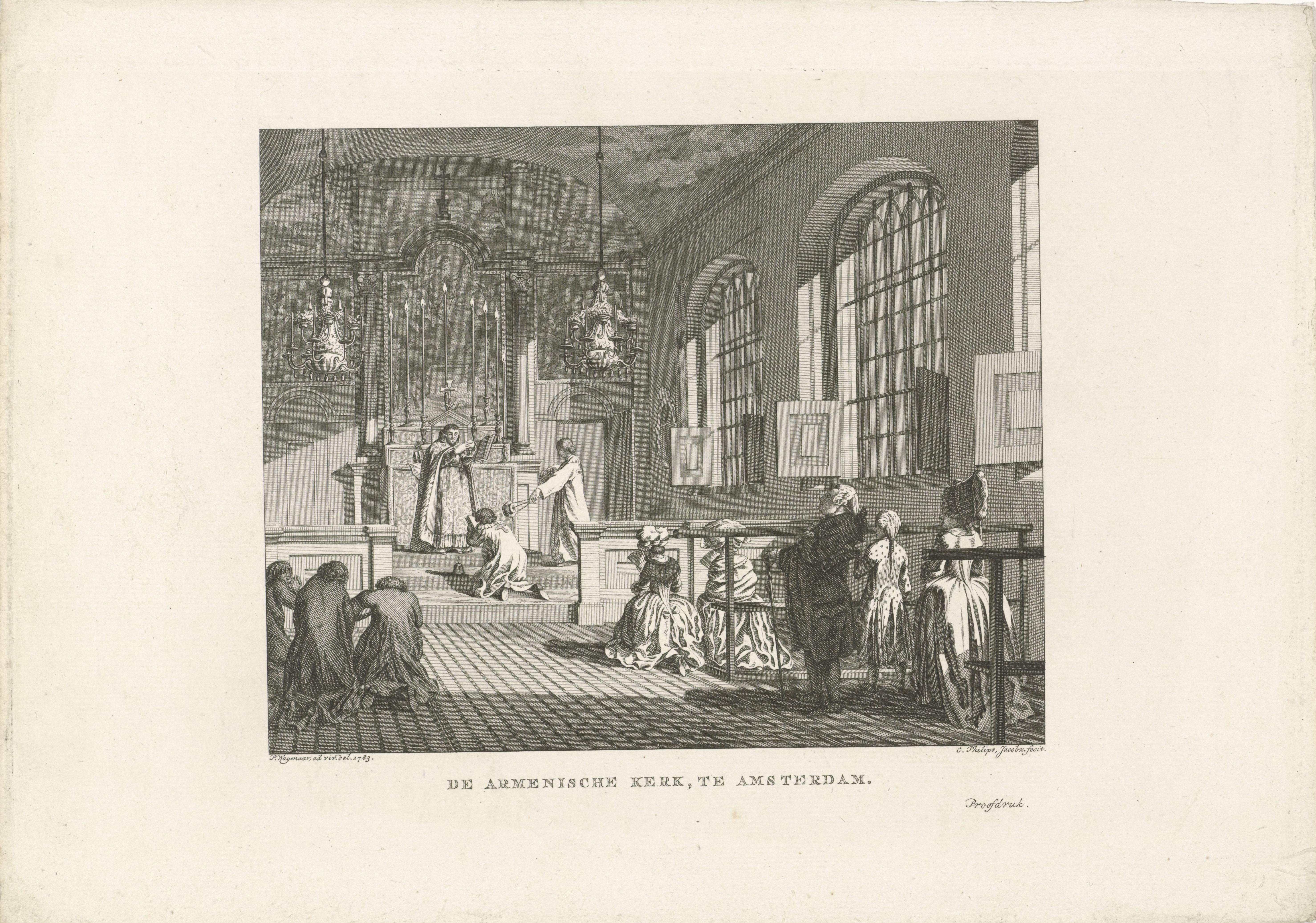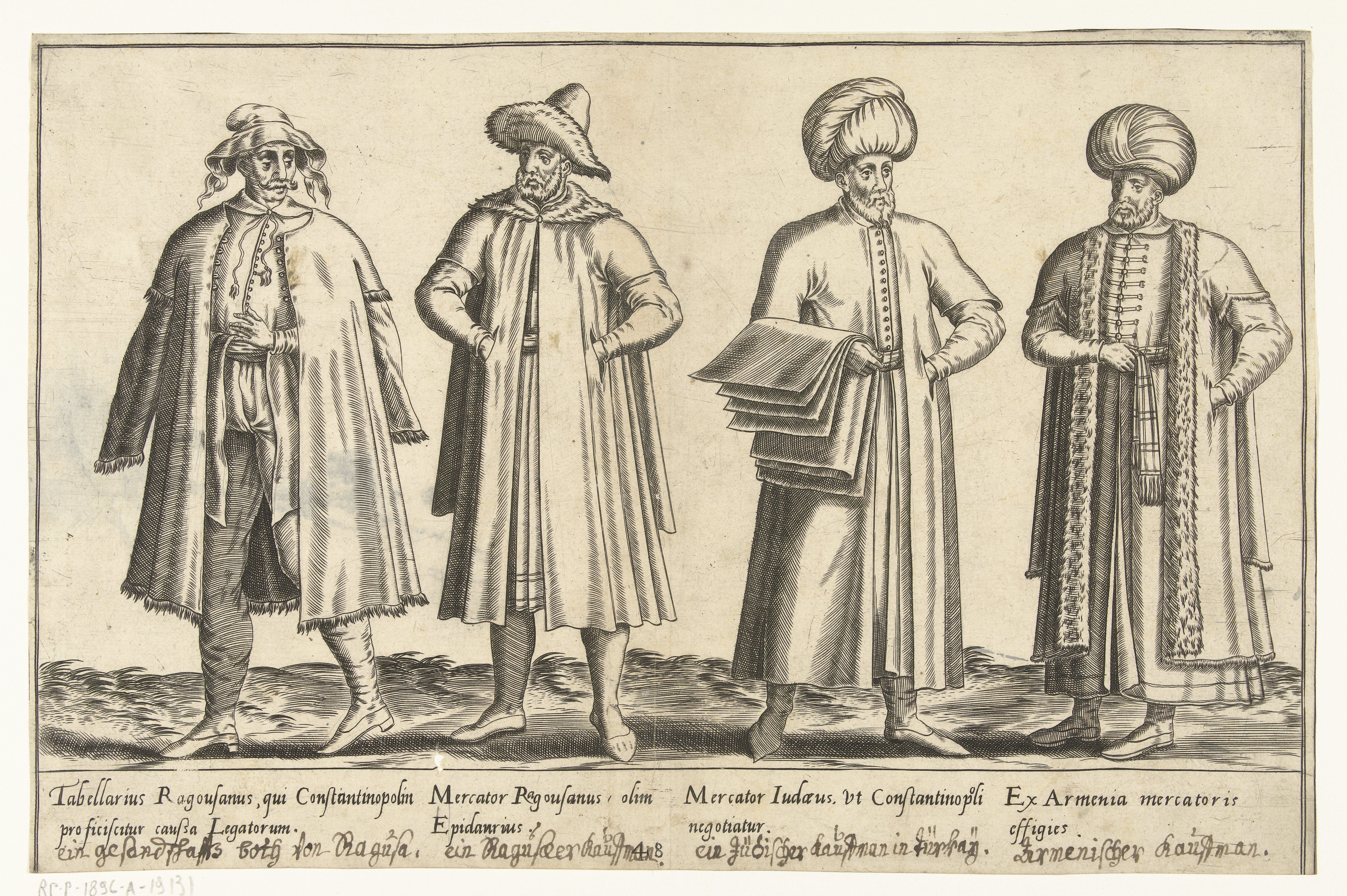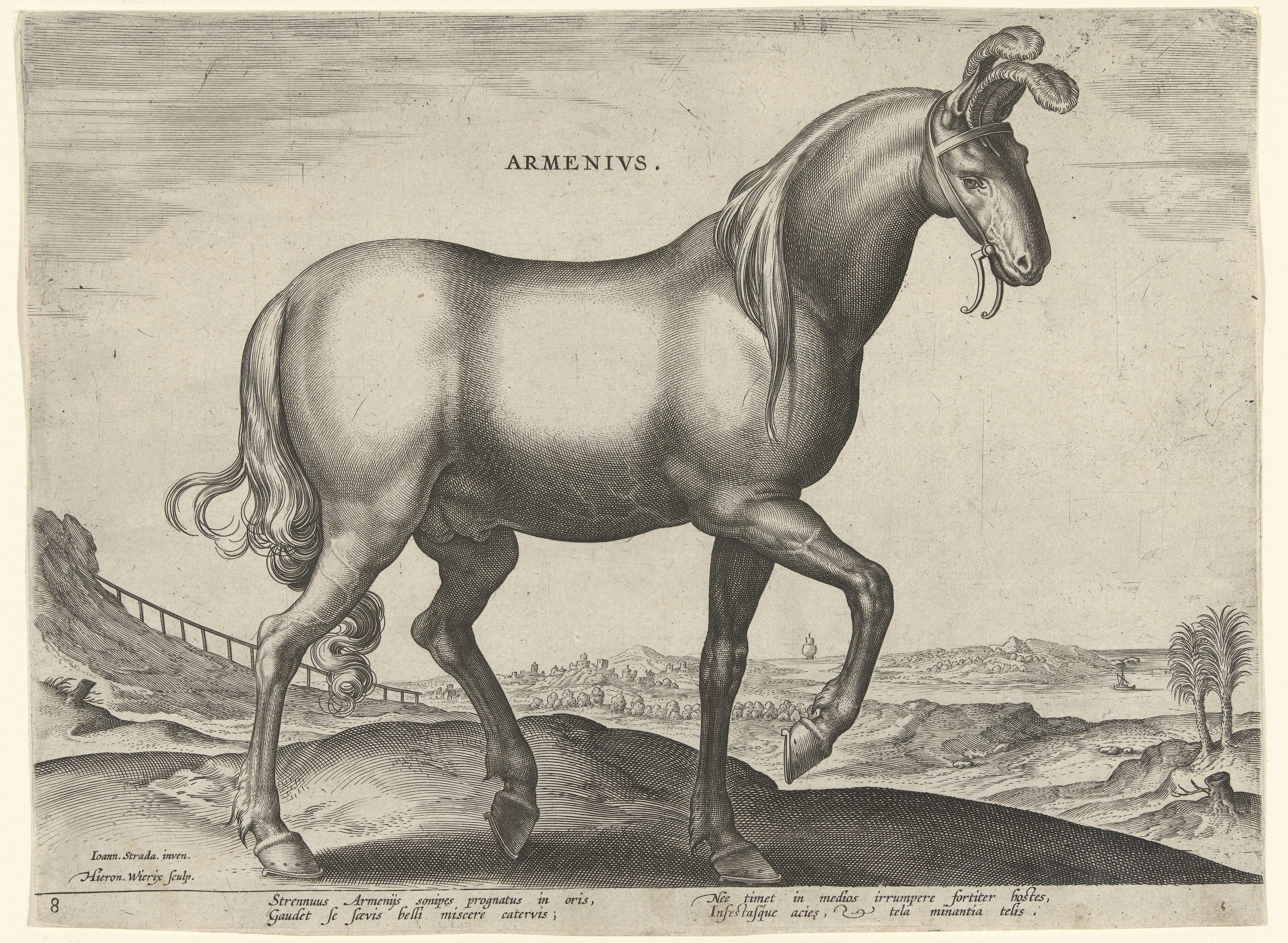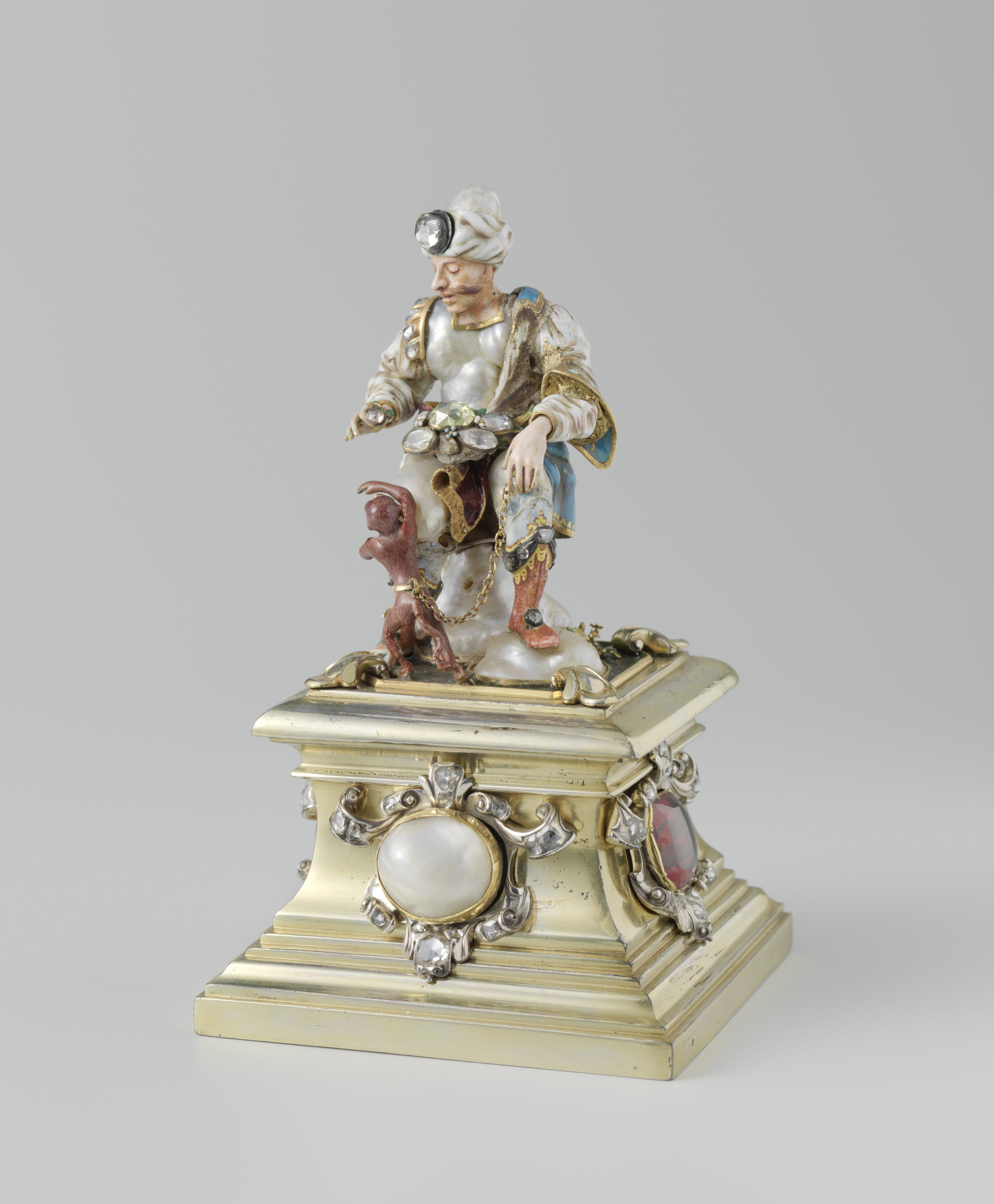The Rijksmuseum is a Dutch national museum dedicated to arts and history in Amsterdam. As it happens the museum has been taken on an initiative on digitalizing its collection. By luck, I came across some digitalized (art) work regarding Armenians and Armenia.
I’ve collected all current items for this article. It should be quite interesting since the digitalized work is of high quality and sheds a light on the lives of Armenians in the Ottoman Empire and in Amsterdam centuries ago.
Jean Baptiste Vanmour
Jean Baptiste Vanmour or Van Mour was a Flemish-French painter, remembered for his detailed portrayal of life in the Ottoman Empire during the Tulip Era and the rule of Sultan Ahmed III.
Armenian social gathering, playing cards. Jean Baptiste Vanmour, ca. 1720 – ca. 1737
Men and women spend the evening together playing a card game. It’s a casual happening; the man in the foreground showing a keen interest in the desk lady. As in other “Turkish” paintings, Vanmour documented precise details of clothing, such as fur-trimmed jackets, a distinctive garment of Armenian men.
Armenian wedding, Jean Baptiste Vanmour, 1720 – 1737
An Armenian wedding procession on its way to the church. In the front are the musicians. Then comes the groom, accompanied by a young man with a saber. Then comes his father, the priest and the female part of the company with the bride dressed in red. In front of the bride and groom is the candle bearer; the couple will keep the candles after marriage.
You can view these works in room 1.3 at the Rijksmuseum in Amsterdam.
Jan Luyken
Johannes or Jan Luyken (April 16, 1649 – April 5, 1712) was a Dutch poet, illustrator and engraver
Coptic, Armenian and Chinese alphabet, Jan Luyken, 1690
Illustration included in: Goeree, Wilhelmus. Preparations to biblical wisdom, and the use of holy and Church history, 3 parts. Amsterdam: Wilhelmus Goeree I, 1690, vol. I.
Stoning of an Armenian boy, Jan Luyken, 1682
The illustration shows an Armenian boy being stoned to death in the Ottoman Empire.
The illustration included in: Tavernier, Jean Baptiste. Six Travel, 3 parts. Amsterdam: widow Joannes van Someren, 1682, vol. 1.
An Armenian child being skinned alive by the Turks, Jan Luyken, 1681
Illustration included in: Melton, Edward. Rare and memorable sea and land travels, p. 361. Amsterdam: Jan Claesz at Hoorn, 1681.
Funeral of an Armenian bishop, Jan Luyken, 1681
Illustration included in: Melton, Edward. Rare and memorable sea and land travels, p. 271. Amsterdam: Jan Claesz at Hoorn, 1681.
Bernard Picart
Bernard Picart (11 June 1673 – 8 May 1733), was a French engraver, son of Etienne Picart, also an engraver. He was born in Paris and died in Amsterdam. After his wife died in 1708, he moved to Amsterdam in 1711, later being joined by his father.
Armenian clergymen and an Armenian bride and groom, Bernard Picart (studio), 1732
A sheet with four representations of Armenian clergymen and use practices during an Armenian wedding. Top left: A priest of the Armenian Apostolic Church. Behind him stands a subdeacon left and right a deacon. Top right: Two Armenian monks in a landscape with a backdrop of Mount Ararat. Bottom left: An Armenian veiled bride is brought to the church by two supervisors. Bottom right: An Armenian groom on his way to church to get married. In addition to him his companion, who is wearing his saber.
Remembrance Day of the dead by Armenian Christians, Bernard Picart (studio), Bernard Picart, 1710-1730
On the day that the Armenian Christians celebrate the Feast of the Cross, in late August, they go to the cemeteries at night to light fires and lament (express their grief).
Interior of an Armenian Apostolic Church, Bernard Picart (studio), 1733
The interior of an Armenian church at the time that a service is held. Men and women sit separately.
Hermanus Petrus Schouten
Hermanus Petrus Schouten (Amsterdam, baptized November 28, 1747 – Haarlem, The Netherlands, May 11, 1822), also written Harmanus Petrus Schouten, Amsterdam was a printmaker, watercolorist, engraver, painter and draftsman.
View of the Armenian church in Amsterdam, Hermanus Petrus Schouten, 1783
View of the Armenian church in Amsterdam: In front of the church there’s a company of a group of men and women. In the foreground, a man is feeding chickens in the street. Under the picture a title in Dutch and French. Upper right numbered “83”.
Fun fact: The Armenian Church in this illustration is still in service. The address is: Krom Boomssloot 22, 1011 GW Amsterdam.
Caspar Jacobsz Philips
Caspar Jacobsz Philips (1732 – 1789), was an 18th-century engraver and architectural historian of the Northern Netherlands. Born in Amsterdam Caspar Jacobsz Philips was the pupil of his uncle, Jan Caspar Philips. He is known for his drawings of Amsterdam buildings in his Grachtenboek.
Interior of the Armenian church in Amsterdam, Caspar Jacobsz Philips, Pieter Wagenaar (II), 1783
Interior of the Armenian church in Amsterdam, where a priest instructs Mass.
Abraham de Bruyn
Abraham de Bruyn was a Flemish engraver. He established himself at Cologne around the year 1577. He is ranked among the Little Masters, on account of his plates being usually very small.
Clothing of merchants in Constantinople around 1580, Abraham de Bruyn, 1581
Print out of a book on sixteenth-century clothing from around 1580. Four male traders from Constantinople. All four are dressed differently. From left to right: an envoy from Croatia (Dubrovnik), a Croatian trader (Dubrovnik), a Jewish merchant and an Armenian merchant. The print has a Latin caption.
Hieronymus Wierix
Hieronymus Wierix was a Flemish engraver and member of the Antwerp Wierix family who made engravings after well-known artists, including Albrecht Dürer.
Horse from Armenia (Armenius), Hieronymus Wierix, Jan van der Straet, ca. 1583 – ca. 1587
An Armenian horse in profile. The picture has a caption in Latin and is part of the first part of a 39-part series on horse races from the Royal stables of Don Juan of Austria.
Anonymous
Statuette of an Armenian merchant with a monkey, anonymous, ca. 1700 – ca. 1725
Statuette of gold, baroque pearls, and precious stones, representing an Armenian seated on a gem like chair. A brown monkey holds a diamond for him. The scene is on a pedestal decorated with precious stones.
While the Rijksmuseum is in the process of digitalizing more works regarding Armenia and Armenians, a follow-up article will be written in due time.
Written by:
Hovik Torkomyan, B Comn
Founder of History of Armenia.
